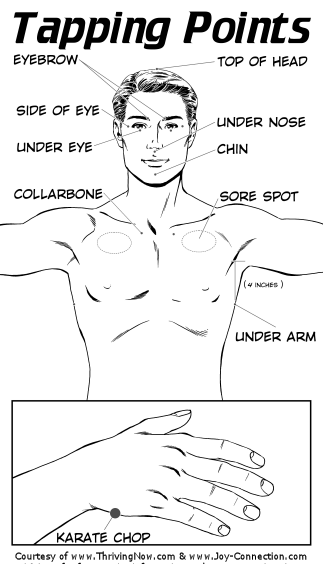 |
Shift the Paradigm |
Changing Your Mind - Resolving Self Limitations
Can you perform miracles? Why not? There are basically three reasons. First, we don't have enough free energy to accomplish the task. Second, we are programmed to know that we can't. Third, we don't know how. The techniques and procedures are simple, but they don't work unless the first two issues are addressed. This article introduces a tool to assist you in changing your inner programming to make the miraculous possible. Before you can change internal programming, you need to have a basic concept of what it is and how it works. Think of the conscious mind as the logical reasoning mind. Think of the subconscious mind as the believing mind. Beliefs are assumptions regarding what is real, what reality is, what is possible and what is not, what is allowed and what is not, and how things work. Our lives are shaped, defined, and limited by a long list of assumptions, many of which we are completely unconscious of. These assumptions and beliefs come from a variety of sources. They originate in the training and conditioning that we received from out parents when we were children, the training and conditioning that we receive from religion, the training and conditioning that we received from the society that we live in, from the training and conditioning of our education, from the training and conditioning that we receive from the media, and from the soul memory that we retain from previous life experiences. Their origin is less important than recognizing them for what they are. To change internal assumptions, we have to change the subconscious mind. Simply doing affirmations is insufficient. To simply think "positive" is insufficient to overcome core assumptions. You can mentally tell your self that you can do something, but your subconscious mind will ignore the instruction if it knows that your core beliefs are different. The subconscious mind will compare all of your conscious thinking and incoming information (whether from intellectual or psychic sources) with your core assumptions and accept or reject the new input based on whether or not it conforms to your core assumptions. So, what are your core assumptions? How can you know what they are? Closely examine every thought and idea that you have dismissed. Why was it dismissed? Did it seem absurd, impossible, or ridiculous? Why? In order to make such as assessment, you had to have a core assumption that you compared it to. What was the assumption? If you are truly objective, is the assumption valid? It is important to know. Core assumptions often originate from fear: fear of punishment, fear of rejection, fear of banishment, fear of torture, fear of ridicule, fear of pain, fear of lack and fear of death. This can come from many sources and experiences. They may include punishment by a parent, punishment by a tribe or society, intimidation by a bully, social embarrassment, etc. So, what are you afraid of? If you know your fears, you also recognize some of the most powerful core assumptions that shape, control, and limit your life. So, if you know some of your core assumptions, beliefs, and fears, how do you change them? If affirmations and intellectual processing is inadequate, what does work? One answer is EFT (Emotional Freedom Technique). EFT is introduced here because it has proved effective for the individuals who participated in the working groups that tested this course. Emotional Freedom Technique (EFT) purports to manipulate the body's energy field by tapping on acupuncture points while a specific traumatic memory is focused on, in order to alleviate a psychological, health, or psychic problem. The difference between EFT and cognitive therapy or the use of affirmations is the energetic effect of tapping on the acupuncture points. The location of the points and the tapping sequence that is generally used in EFT is shown on the diagram below. The enhanced effect from tapping appears to be present even with considerable variation in the points used or the sequence of their use. The exact mechanism of this is unclear. It may be that specific points do matter and that we simply don't understand the underlying mechanism well enough to be more specific. EFT Basic ProcedureHere's how a basic EFT sequence works:
EFT Steps(1) Head (H) The crown, center and top of the head. Tap with all four fingers on both hands. (2) Eyebrow (EB) The inner edges of the eyebrows, closest to the bridge of the nose. Use two fingers. (3) Side of eye (SE) The hard area between the eye and the temple. Use two fingers. (4) Under eye (UE) The hard area under the eye, that merges with the cheekbone. Use two fingers, in line beneath the pupil. (5) Under nose (UN) The point centered between the bottom of the nose and the upper lip. Use two fingers. (6) Chin (CH) This point follows symmetrically with the previous one, and is centered between the bottom of the lower lip and the chin. (7) Collarbone (CB) Tap just below the hard ridge of your collarbone with four fingers. (8) Underarm (UA) On your side, about four inches beneath the armpit. Use four fingers. (9) Head (H) And back where you started, to complete the sequence.  Lesson Objectives
Additional EFT ResourcesThe EFT training manual is free. It can be downloaded from: Several youtube presentations demonstrating the procedure are available. The following are highly recommended: Emotional Freedom Techniques - Tapping Points You can find many additional presentations by doing a search on youtube, google video or similar sites. Books on EFT (Amazon Link)
 | Home | Site Map | Disclaimer | Contact | Privacy Policy |  |